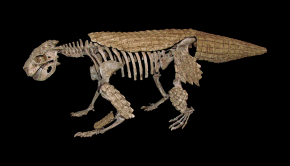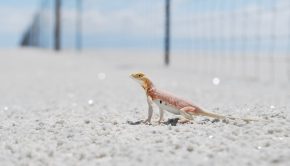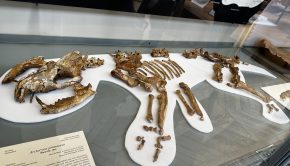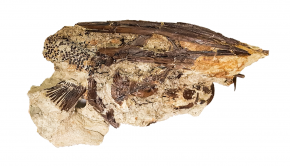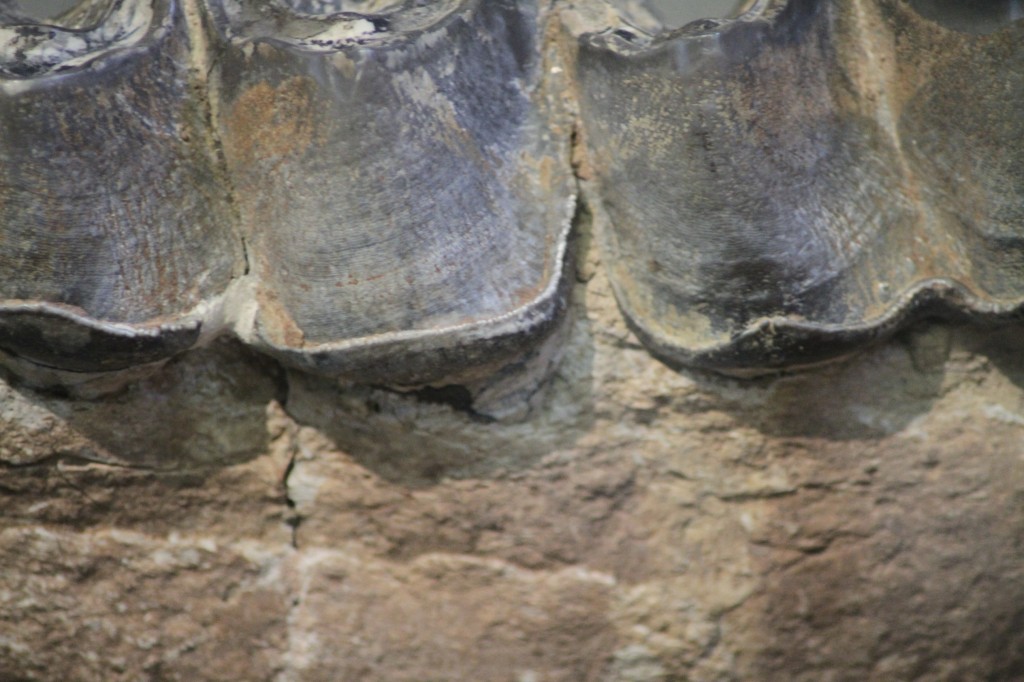Episode 45: Post K-Pg radiations
The Cretaceous-Paleogene (K-Pg) mass extinction was the latest of the ‘big five’ events. Approximately 75% of species went extinct, with the most notable victims being non-avian dinosaurs. But what happened afterwards? By which methods were some of the survivors able to spread to fill vacant niches?
The University of Bath’s Dr Nick Longrich joins us to hypothesise about the dispersal mechanism of a very unusual group of ground-dwelling predatory reptiles called amphisbaenians (worm lizards).
Podcast: Download (Duration: 46:49 — 64.3MB)

Amphisbaenians (worm lizards) are a group of predominantly legless squamates which possess a superficial resembleance to earthworms. They are burrowers and possess a highly-modified skulls for digging. Image: Bipes bipods. The genus Bipes contains the only amphisbaenians with limbs. Image credit: Adam Clause.

Skull of the Iberian genus Blanus. This image illustrates the re-enforcement of the head, necessary for digging, and the relatively large, recurved, teeth, for predation. Image credit: Nick Longrich.
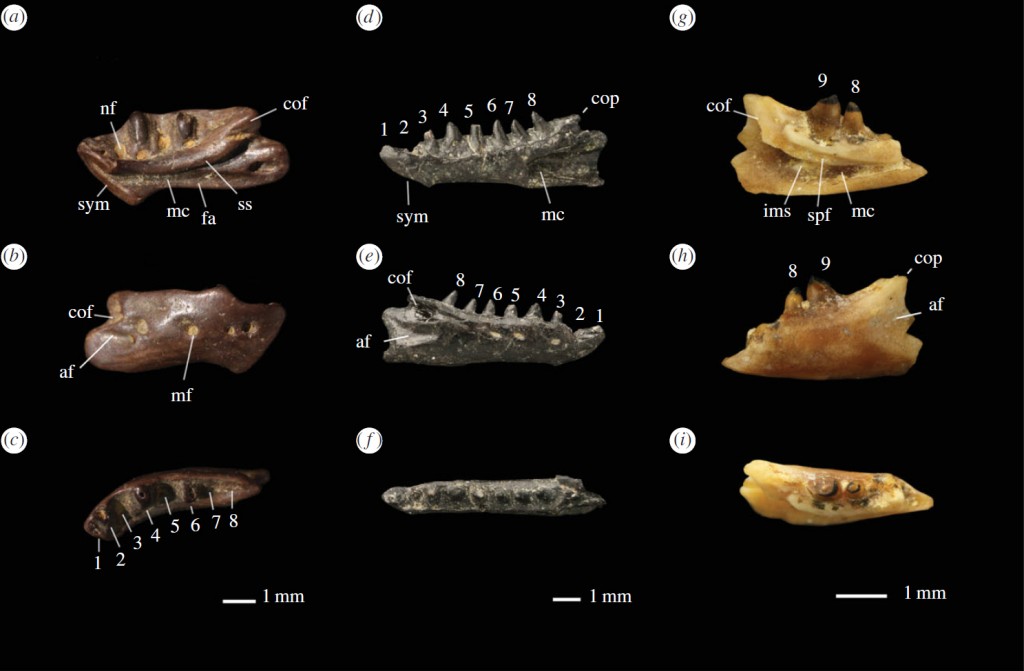
Fossils of Palaeocene Amphisbaenia from North America. (a–c) Chthonophis subterraneus, AMNH 30799, holotype right dentary: (a) medial view, (b) dorsal view and (c) lateral view. (d–f) Archaerhineura mephitis, YPM 18627, holotype right dentary: (d) lateral view, (e) medial view and ( f ) dorsal view. (g–i) Oligodontosaurus cf. wyomingensis, YPM-PU 16777 left dentary: (g) lateral view, (h) medial view and (i) dorsal view. Abbreviations: af, adductor fossa; cof, coronoid facet; cop, coronoid process; fa, facet for articular; mc, Meckelian canal; mf, mental foramina; nf, nutrient foramen; spf, splenial facet; sym, symphysis. From Longrich et al. 2015.
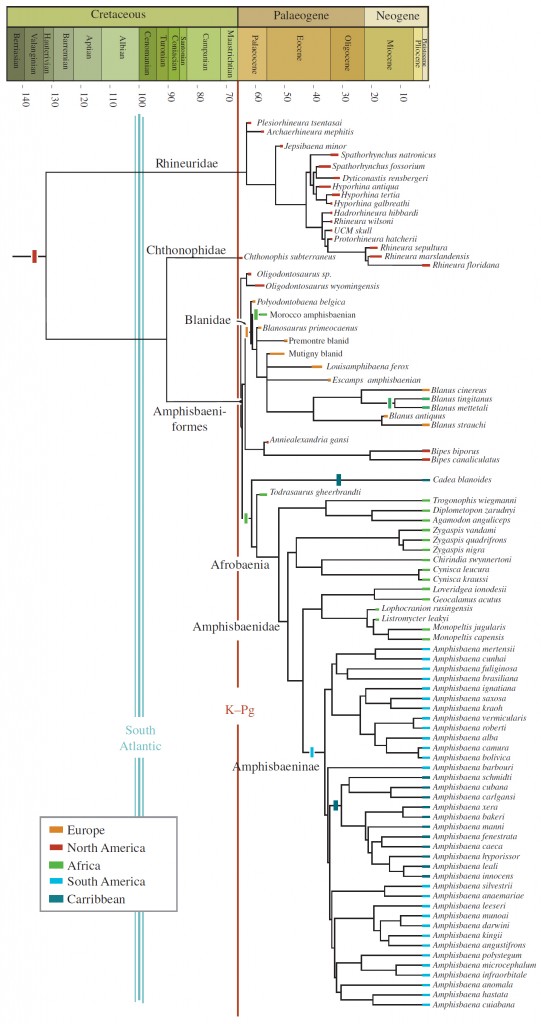
Phylogeny of Amphisbaenia. The basal position of the rhineurids and the Palaeocene Chthonophis and Oligodontosaurus are consistent with a North American origin of Amphisbaenia. The rapid appearance of new lineages in the Palaeocene documents post-Chicxulub radiation. The radiation is associated with multiple dispersal events—colonization of Europe by Blanidae, Africa by Afrobaenia and South America by Amphisbaenidae. Strict consensus of 76 trees, based on an analysis of 48 taxa and 310 characters using a molecular tree as a backbone constraint. From Longrich et al. 2015.
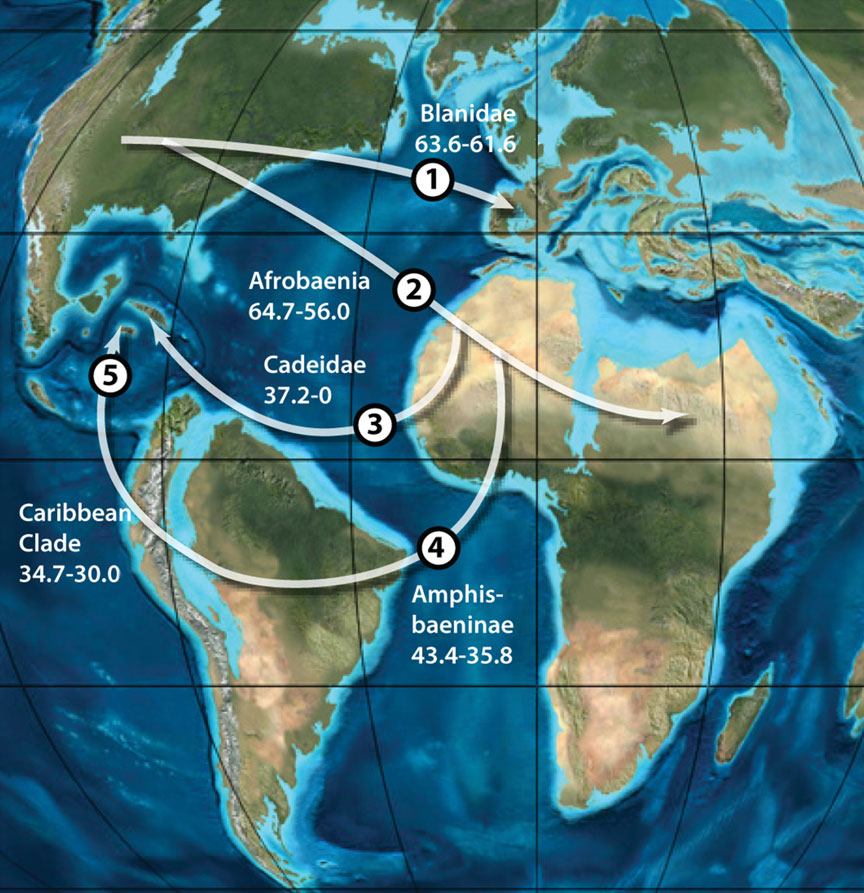
Oceanic dispersal of Amphisbaenia. Multiple oceanic dispersal events are implied by the evolutionary tree shown above: (1) dispersal of Blanidae from North America to Europe; (2) dispersal of stem Afrobaenia from North America to Africa; (3) dispersal of Cadeidae to Cuba (either from Africa, as shown, or else from North America); (4) dispersal of Amphisbaeninae to South America; and (5) dispersal of Amphisbaeninae through the Caribbean. From Longrich et al. 2015.


